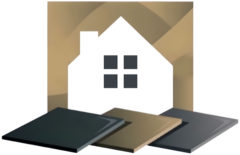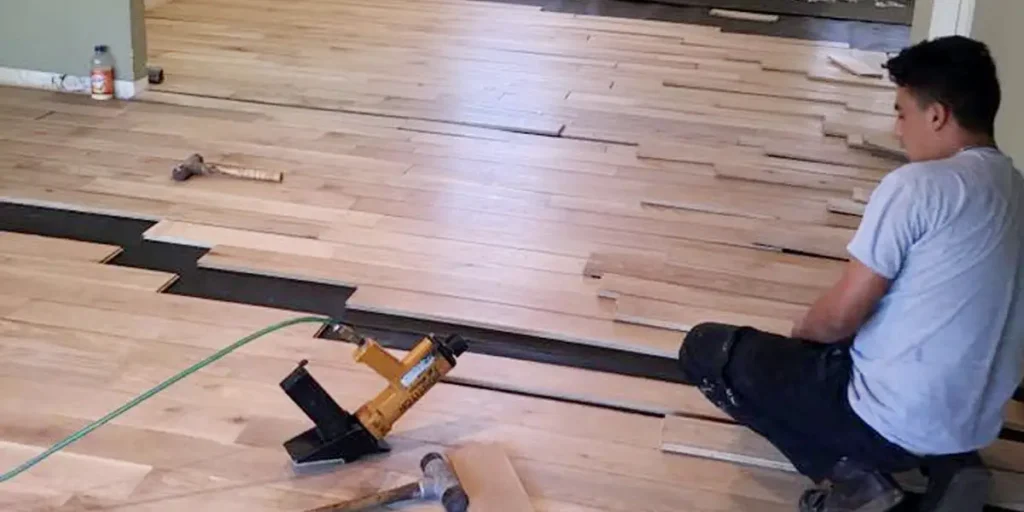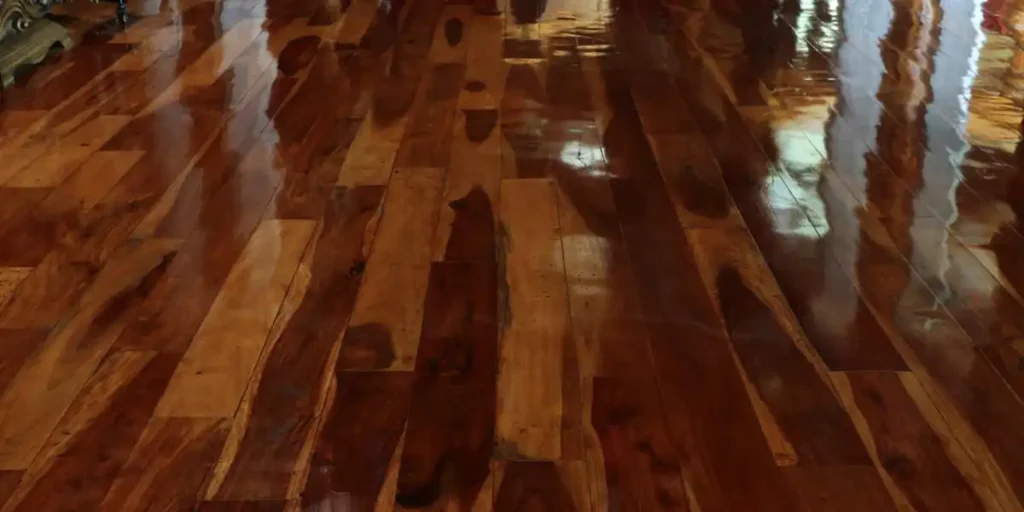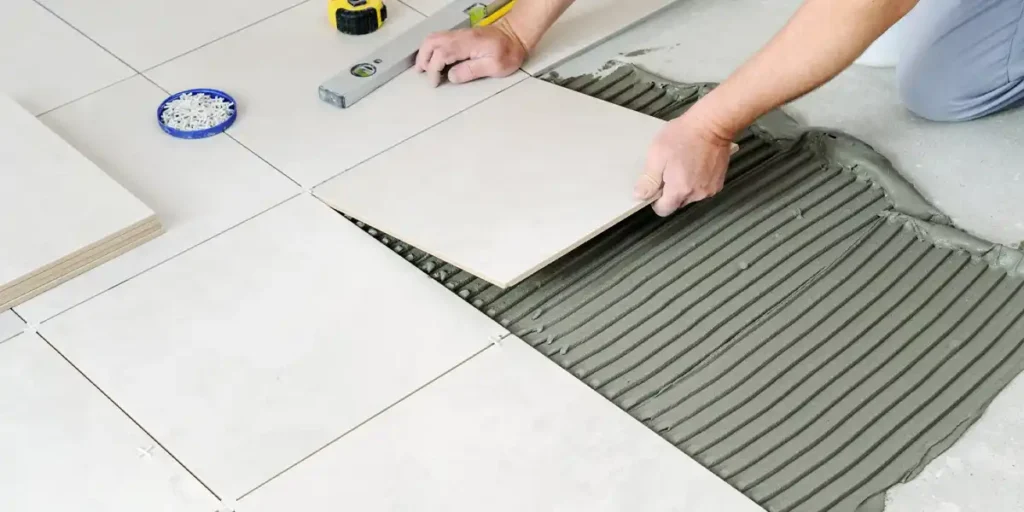So, you’re considering laminate flooring. Smart move! It’s stylish, affordable, and relatively easy to install. But there’s one nagging question that keeps popping up: is laminate flooring waterproof?
The answer, unfortunately, isn’t a simple yes or no.
Water damage is a significant concern for many homeowners, and rightfully so. A flooded kitchen or a leaky pipe can quickly turn your dream floor into a costly nightmare.
This article aims to clear up the confusion surrounding the waterproof nature of laminate flooring, helping you make an informed decision.
Understanding the Water Resistance Spectrum
Laminate flooring isn’t inherently waterproof, but its ability to handle water lies on a spectrum. On one end, you have completely water-resistant materials; on the other, those easily damaged by even minor spills.
Let’s break down the different levels of water resistance.
Standard Laminate Flooring: A Water-Resistant Illusion?
Most standard laminate floors are marketed as “water-resistant,” but this term can be misleading. While they might withstand minor spills that are quickly wiped up, prolonged exposure to moisture can cause irreversible damage.
- Core Composition: Standard laminate features a core made of compressed wood fibers (fiberboard), which readily absorbs water and swells.
- Surface Layer: The surface may repel water briefly, but seams between planks allow moisture to seep through.
- Consequences: Prolonged exposure can lead to bubbling, delamination, and warping, eventually necessitating replacement.
Waterproof Laminate Flooring: A Step Up in Protection
Waterproof laminate flooring offers a more robust solution for areas prone to spills or high humidity.
- Core Enhancements: Uses advanced materials like PVC or polymer composites to resist water absorption.
- Sealed Edges: Tight locking mechanisms and water-resistant coatings prevent water from penetrating.
- Improved Durability: Handles occasional spills and higher moisture levels, making it suitable for bathrooms, kitchens, and basements.
However, even waterproof laminate has its limits. Extended submersion in water may still lead to issues, so prompt cleanup is essential.
Is Laminate Flooring Suitable for Pets?
Pet owners often find themselves contemplating the right flooring options. Laminate flooring comes with certain pros and cons when it comes to pets.
Pros
- Scratch Resistance: High-quality laminates are often resistant to minor scratches.
- Easy to Clean: Its smooth surface makes it easy to clean pet hair and dirt.
- Cost-Effective: Cheaper to replace if damaged than hardwood flooring.
- Hygienic: Does not harbour as many allergens as carpeting, making it more hygienic.
Cons
- Slippery: The surface can be slippery for pets, making it difficult for them to grip.
- Noise: Can be noisy when pets walk or run over it.
- Not Claw-Proof: Strong claws can still scratch the surface over time.
- Comfort: Less comfortable for pets to lie on compared to carpet.
To make laminate flooring more pet-friendly, consider the following:
- Choose textured or embossed finishes for better grip.
- Place area rugs or mats in zones where pets frequent.
- Keep pet claws trimmed to minimise scratching.
Selecting a high-quality, textured laminate can be key in making this flooring option more suitable for pets.
Is Laminate Flooring Waterproof? Installation Matters!
Even the most waterproof laminate flooring can fail if improperly installed. Proper installation plays a crucial role in preventing water damage.
Key Installation Tips:
- Use Moisture-Resistant Underlayment: This extra layer helps block moisture from the subfloor.
- Check Subfloor Condition: Ensure it is dry, level, and free of existing moisture to prevent warping.
- Seal Edges and Seams: Apply waterproof sealants to seams and the perimeter to block water penetration.
- Allow for Expansion Gaps: Proper spacing prevents buckling due to moisture or temperature changes.
Choosing the Right Laminate for Your Needs
The question, is laminate flooring waterproof, hinges on the type of laminate you choose.
For High-Moisture Areas:
- Opt for waterproof laminate flooring in bathrooms, kitchens, basements, and laundry rooms.
For Low-Moisture Areas:
- Standard laminate works well in living rooms, bedrooms, and hallways, as long as spills are addressed promptly.
Pros and Cons of Waterproof Laminate Flooring
Pros:
- Durability: Handles spills and moisture better than standard laminate.
- Versatility: Suitable for both wet and dry areas.
- Affordability: Cheaper than tile or hardwood options for moisture-prone spaces.
- Ease of Maintenance: Simple to clean and maintain.
Cons:
- Higher Cost: Waterproof laminate is more expensive than standard laminate.
- Fewer Design Options: Limited styles compared to traditional laminate.
- Installation Complexity: Proper installation is critical, requiring expertise or professional services.
Final Thoughts
So, is laminate flooring waterproof? The answer depends on the type and your specific needs. Standard laminate provides an affordable, stylish option but falls short in moisture-prone areas. Waterproof laminate offers peace of mind and longevity, making it the better choice for kitchens, bathrooms, and basements.
Investing in waterproof laminate ensures you protect your flooring, your home, and your budget in the long run.
Why Trust Cardenas Flooring for Your Laminate Flooring Installation?
With over nine years of expertise, Cardenas Flooring specializes in installing both standard and waterproof laminate flooring. Our team provides:
- Personalized Recommendations: We help you choose the perfect laminate for your home.
- Expert Installation: Ensuring precision and durability with every project.
- Wide Selection: Choose from a range of styles and finishes tailored to your taste.
- Affordable Pricing: High-quality results at competitive rates.
Ready to upgrade your flooring? Contact us today or visit Cardenas Flooring for a free estimate. Let us help you transform your home with durable, water-resistant, or waterproof laminate flooring that fits your needs and budget!
FAQs (Frequently Asked Questions)
1. Can I use waterproof laminate in my bathroom?
Yes, waterproof laminate is a great choice for bathrooms. It resists moisture, spills, and humidity, making it suitable for high-moisture environments. However, proper installation and sealing are crucial to prevent water from seeping beneath the planks. With its stylish designs and durability, waterproof laminate provides a practical and attractive solution for your bathroom flooring needs.
2. What happens if water gets under my laminate flooring?
Water beneath laminate flooring can cause severe issues, including warping, bubbling, and even mold growth. Prolonged exposure weakens the core material, leading to costly replacements. Immediate action is vital—dry the area thoroughly and address any leaks promptly to minimize damage. Waterproof laminate reduces this risk but still requires proper care and maintenance for longevity.
3. How do I clean spills on laminate flooring?
Spills on laminate flooring should be cleaned immediately. Use a clean, dry cloth or mop to absorb the liquid and prevent moisture from seeping into the seams or core. Avoid harsh chemicals or soaking the floor, as this can damage the laminate’s surface and structure. Regular prompt cleanup ensures your laminate flooring stays in excellent condition.
4. Is there a warranty on waterproof laminate flooring?
Yes, many manufacturers offer warranties for waterproof laminate flooring, often covering water damage for a specified period. These warranties vary, so carefully review the terms and conditions to understand what is included. Ensure proper installation and maintenance to avoid voiding the warranty. A good warranty adds peace of mind when choosing laminate flooring for your home.
5. How much more expensive is waterproof laminate compared to standard laminate?
Waterproof laminate generally costs 20-50% more than standard laminate due to its advanced materials and construction. While the upfront cost is higher, the enhanced durability and water resistance provide long-term savings by reducing the likelihood of repairs or replacements. Consider your needs and the space’s moisture levels when deciding if waterproof laminate is worth the investment.




